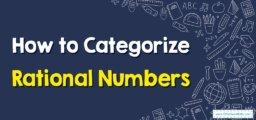How to Solve and Graph One-Step Inequalities with Rational Numbers?

Solving and Graphing One-Step Inequalities with Rational Numbers – Examples 1
Solving and Graphing One-Step Inequalities with Rational Numbers – Examples 2
Original price was: $109.99.$54.99Current price is: $54.99.
Original price was: $109.99.$54.99Current price is: $54.99.
Original price was: $114.99.$54.99Current price is: $54.99.
Related to This Article
More math articles
- Line Graphs
- How to Find the Volume and Surface Area of Rectangular Prisms? (+FREE Worksheet!)
- A Comprehensive Collection of Free CLEP College Algebra Practice Tests
- 6th Grade IAR Math Worksheets: FREE & Printable
- 4th Grade STAAR Math Worksheets: FREE & Printable
- 5th Grade NJSLA Math Worksheets: FREE & Printable
- 5 Perfect Blue Light Glasses for Online Teachers
- How to Find Complementary and Supplementary Angles? (+FREE Worksheet!)
- Finding Area of Compound Figures
- How to Find Arc Length and Sector Area? (+FREE Worksheet!)




























What people say about "How to Solve and Graph One-Step Inequalities with Rational Numbers? - Effortless Math: We Help Students Learn to LOVE Mathematics"?
No one replied yet.